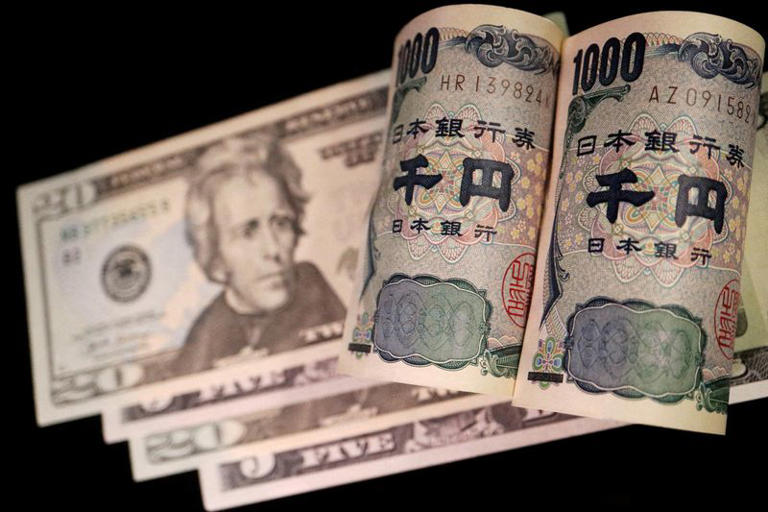On Wednesday, the dollar held its ground firmly, maintaining its position while the yen lingered near lows not seen in 34 years. This stability followed a series of statements from key Federal Reserve officials, including Chair Jerome Powell, indicating a likelihood of U.S. interest rates remaining elevated for an extended period.
The absence of clear guidance on the timing of interest rate cuts disappointed investors who had hoped for significant easing measures in the near term. Instead, Powell and other central bank officials emphasized the need for maintaining a restrictive monetary policy stance for a prolonged period, citing the current strength of the labor market and persistent inflationary pressures as factors driving this decision.
These remarks came against the backdrop of recent data releases highlighting the resilience of the U.S. economy, despite ongoing inflationary challenges. Powell underscored the rationale behind the Fed’s stance, emphasizing the importance of allowing current policy measures more time to take effect while closely monitoring evolving economic data and forecasts.
Despite this, the dollar remained relatively stable, with the euro trading near its recent five-and-a-half-month low. Similarly, against a basket of currencies, the dollar held near its five-month peak, reflecting its strength in the currency markets and marking a 5% increase for the year.
Powell’s statements effectively dashed hopes for imminent rate cuts, with market participants now pricing in September as the probable starting point for any easing cycle, a departure from earlier expectations of a June timeline. Traders are now anticipating a total of 40 basis points of rate cuts in 2024, a significant reduction from the 160 basis points forecasted at the beginning of the year.
The prospect of prolonged higher rates in the U.S. has led to an increase in yields, with the benchmark 10-year Treasury yields reaching a five-month high. The yen, which is highly sensitive to movements in U.S. yields, has remained at levels last observed in 1990, prompting concerns about potential intervention by Japanese authorities if the currency approaches the psychologically significant level of 155 per dollar.
Furthermore, the dollar’s strength has had reverberations across emerging markets in Asia, prompting central banks to intervene in an effort to stabilize their currencies amidst the uncertainty.
In summary, the resilience of the dollar, coupled with expectations of sustained higher rates in the U.S., has significantly influenced global currency markets, prompting reactions from central banks and investors alike as they navigate the evolving economic landscape.
